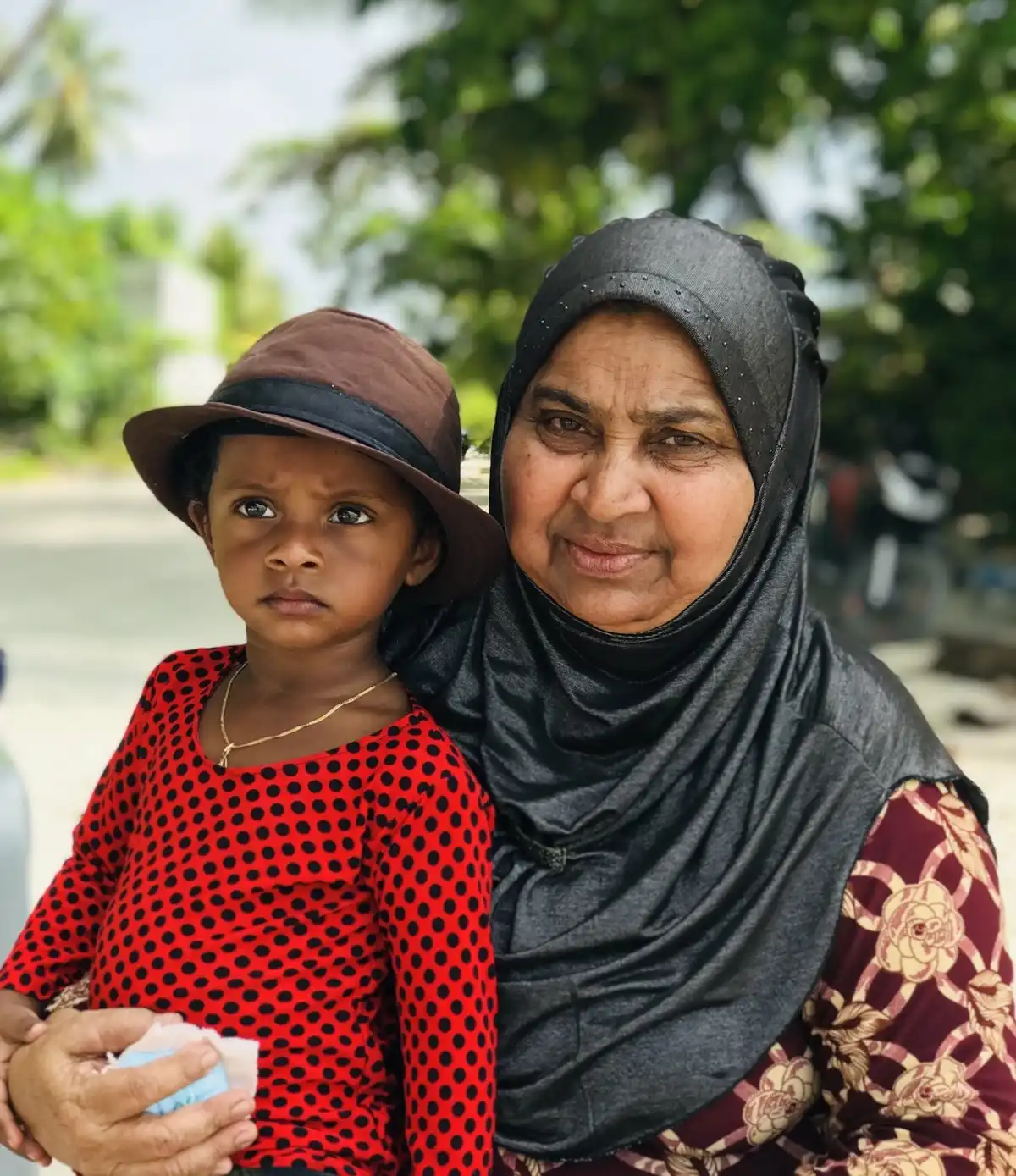Discover the historic capital of Faafu Atoll with ancient ruins, pristine beaches, and authentic Maldivian culture
Located in the Faafu Atoll, Nilandhoo Island serves as the administrative capital of the atoll and offers visitors a unique blend of historical significance and natural beauty. This peaceful island maintains its cultural heritage while providing access to some of the Maldives' most spectacular marine environments.
What makes Nilandhoo special is its rich historical significance, featuring some of the oldest Islamic ruins in the Maldives. The island is home to the ancient Aasaari Miskiy mosque, believed to date back to the 12th century, marking the early period of Islam in the Maldives. With a modest population, visitors experience an intimate atmosphere where they're welcomed as guests rather than treated as tourists.
Visitors to Nilandhoo are drawn by its historical sites, pristine beaches, excellent snorkeling opportunities, and chances to engage with local culture. The island's administrative importance, historical significance, stunning marine environment, and genuine cultural experiences make it an ideal destination for travelers seeking to discover the authentic heart of the Maldives beyond the luxury resorts.
Nilandhoo Island is situated in the central part of Faafu Atoll, approximately 125 kilometers southwest of Male. As the atoll capital, it serves as an administrative hub for the region and enjoys a strategic position within the atoll.
Its location provides excellent access to the region's pristine marine environments while maintaining a balance between development and tradition. Nilandhoo offers a more authentic experience compared to some of the more tourist-developed islands in the Maldives, while still providing the necessary infrastructure as an atoll capital.
Nilandhoo Island is renowned for its rich historical heritage, particularly its ancient Islamic ruins that provide insights into the early spread of Islam in the Maldives. These historical sites make Nilandhoo a unique destination for those interested in Maldivian history and cultural heritage.

This ancient mosque is believed to date back to the 12th century, making it one of the oldest Islamic structures in the Maldives. Built with coral stones, it features intricate carvings and historical inscriptions.

The island contains several archaeological sites that provide evidence of early settlements and the transition from Buddhism to Islam in the Maldives.

Despite its administrative role, Nilandhoo maintains traditional fishing practices that have sustained the community for generations, providing both food and economic stability.

As the atoll capital, Nilandhoo serves as the administrative hub for Faafu Atoll, housing government offices, educational facilities, and healthcare services for the region.
Nilandhoo's historical importance in the Maldives:
These historical elements make Nilandhoo a living museum of Maldivian cultural heritage.
As the capital of Faafu Atoll, Nilandhoo serves several important functions:
This administrative importance gives Nilandhoo a unique character among local islands, blending traditional island life with more modern facilities.
Nilandhoo offers a range of accommodation options that focus on authentic experiences and local hospitality. As the atoll capital, the island provides slightly more developed facilities than some neighboring islands while maintaining strong connections to the local community.

Several family-operated guesthouses offer clean, comfortable accommodations with personal service. These properties feature air-conditioned rooms with private bathrooms, home-cooked Maldivian meals, and direct access to local knowledge through host families.
Price Range: $50-85 per night
Features: Authentic hospitality, cultural insights, local excursion arrangements

As the atoll capital, Nilandhoo features a few small hotels offering slightly more amenities than typical guesthouses. These establishments provide comfortable rooms, restaurant facilities, and organized excursions while maintaining a local character.
Price Range: $70-120 per night
Features: Enhanced amenities, restaurant service, organized tours

Some properties offer beachfront locations with direct access to the island's beautiful shores. These accommodations range from simple cottages to more developed facilities, providing a peaceful environment for those seeking proximity to the ocean.
Price Range: $65-100 per night
Features: Beach access, ocean views, water sport facilities
Nilandhoo is blessed with pristine beaches and a spectacular marine environment. Despite being the atoll capital, the island maintains beautiful natural areas and healthy surrounding reefs, offering excellent snorkeling and marine encounters.
Nilandhoo features stunning white sand beaches along portions of its coastline. The eastern beach is particularly impressive, with powdery sand and crystal-clear turquoise waters that create postcard-perfect vistas. The western side offers a more sheltered environment, with calm waters ideal for swimming.
The island has a designated "bikini beach" where tourists can wear Western-style swimwear. This beautiful stretch of sand provides a relaxing environment while respecting local cultural norms. The remaining beaches require modest dress as they are used by the local community.
Nilandhoo's vibrant house reef is accessible from several points around the island, featuring healthy coral formations and abundant marine life. The reef's accessibility makes it possible to enjoy excellent snorkeling without needing boat transportation.


The waters around Nilandhoo Island offer excellent marine biodiversity:
Faafu Atoll is known for its exceptional coral health, making Nilandhoo an ideal base for exploring this underwater paradise.
Nilandhoo offers a unique blend of historical exploration, cultural experiences, and natural adventures. As the atoll capital with significant historical sites, the island provides visitors with diverse activities not found on other local islands.











Nilandhoo is home to a diverse community of approximately 1,200 residents who maintain traditional values while embracing their role as the atoll capital. The island's population includes government workers, educators, healthcare professionals, and traditional fishermen, creating a unique blend of traditional and contemporary Maldivian society.
Daily life on Nilandhoo reflects its dual identity as both a traditional island and an administrative center. Government offices, schools, and healthcare facilities operate alongside traditional fishing activities and island customs. The island awakens with the call to prayer, followed by a day of work in various sectors, family responsibilities, and community interactions. As the atoll capital, Nilandhoo experiences more daily movement of people from neighboring islands who come for administrative services, education, or healthcare.
Nilandhoo preserves many traditional Maldivian customs and cultural practices while serving as a center for contemporary civic life. Religious observances play an important role in community life, with festivals like Eid celebrated enthusiastically. Cultural expressions such as Boduberu performances remain vibrant, and the island takes pride in its historical heritage, particularly its ancient mosque and archaeological sites.
What makes Nilandhoo's community unique is its function as the administrative hub for Faafu Atoll. The island hosts government offices, courts, police facilities, educational institutions, and healthcare services that serve the entire atoll. This administrative role brings a diverse population to the island, including civil servants from throughout the Maldives, creating a more cosmopolitan atmosphere than found on other local islands while still maintaining strong traditional values.


Discover the unique historical heritage, pristine beaches, and authentic island life of Nilandhoo. Book your stay today for an unforgettable cultural and natural experience in Faafu Atoll.
Plan Your TripThe most convenient way to reach Nilandhoo is by domestic flight from Male to Dharavandhoo Airport (35 minutes), followed by a 30-minute speedboat transfer. Public ferry service operates weekly from Male (approximately 8-10 hours journey time). Private speedboat transfers can be arranged through guesthouses (approximately 3-4 hours from Male). As the atoll capital, Nilandhoo has better transportation connections than some other islands in the region.
Nilandhoo is home to the ancient Aasaari Miskiy mosque, believed to date back to the 12th century, making it one of the oldest Islamic structures in the Maldives. This coral stone mosque features intricate carvings and historical inscriptions that provide insights into the early spread of Islam in the Maldives. The island also contains archaeological remains from pre-Islamic periods, showing evidence of Buddhist influences before the conversion to Islam. These historical sites make Nilandhoo an important location for understanding Maldivian cultural and religious history. As the atoll capital, Nilandhoo has also played an administrative role in the region for generations, further adding to its historical importance.
The best time to visit Nilandhoo Island is during the northeast monsoon season (December to April), which brings dry, sunny weather with lower humidity and calmer seas. This period is ideal for water activities, with excellent visibility for snorkeling and diving. The southwest monsoon (May to November) brings occasional rain showers but also lower prices and fewer tourists. Water temperature remains warm (27-30°C/80-86°F) throughout the year.
Nilandhoo stands out for its dual identity as both a traditional island and the administrative capital of Faafu Atoll. This unique position means the island offers historical sites like the ancient Aasaari Miskiy mosque alongside modern facilities such as government offices, schools, and healthcare services. Visitors can experience traditional Maldivian island life while also observing the functioning of local governance. The island's historical significance provides educational opportunities not found on many other local islands, making it particularly interesting for those interested in Maldivian history and culture. Despite its administrative role, Nilandhoo still maintains beautiful beaches and excellent snorkeling opportunities, offering a well-rounded experience for visitors.
As the capital of Faafu Atoll, Nilandhoo offers more developed facilities than typical local islands. The island houses government administrative offices, a police station, and judicial facilities serving the entire atoll. Educational facilities include a school that provides education through secondary level, serving students from throughout the region. Healthcare services are more comprehensive, with a health center offering basic medical care. The island has more consistent electricity and internet connectivity than smaller islands. Banking services are available, including ATM facilities. Transportation connections are better, with more frequent ferry services and speedboat options. While these facilities make the stay more comfortable, Nilandhoo still maintains its island character and is not urbanized like Male or other city islands.